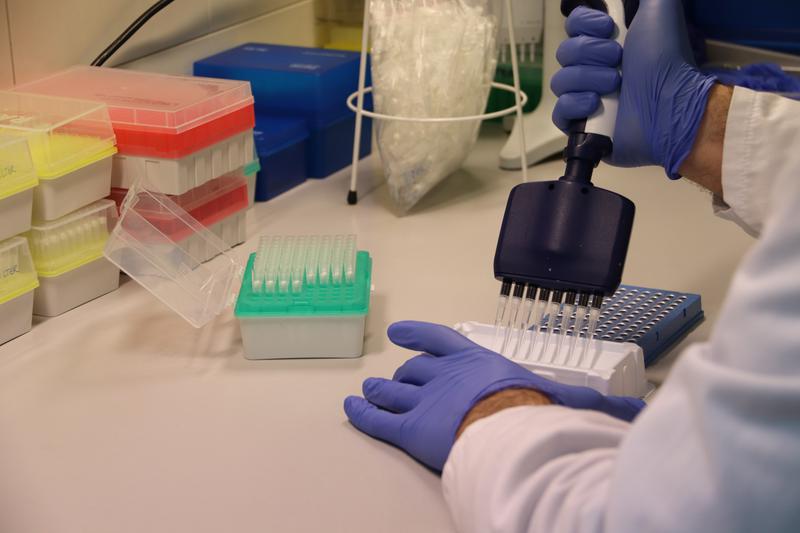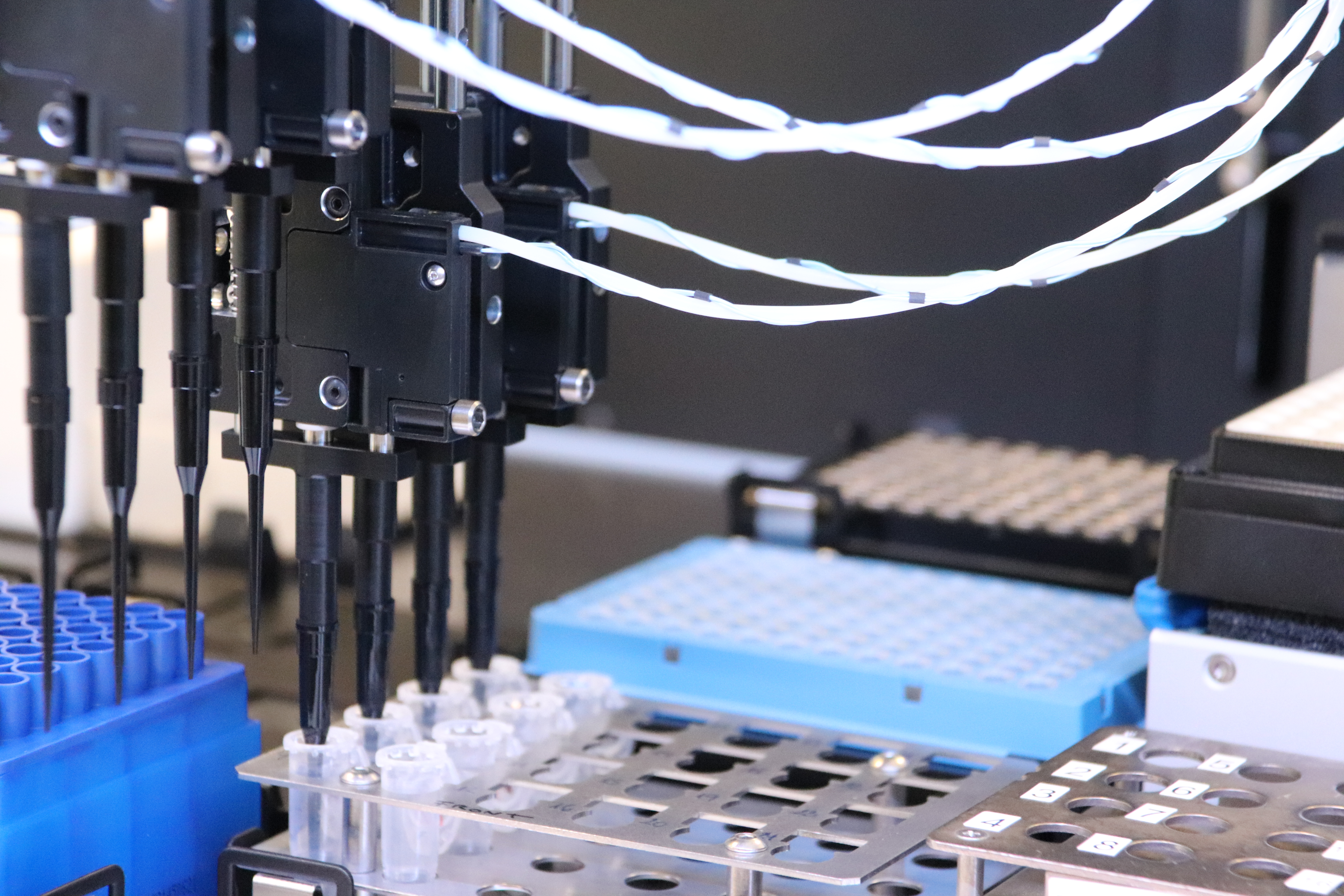Barcelona's genome analysis center: where humanity's oldest secrets are unveiled
Institution aims to find personalized medicines and trace genetic reasons for rare diseases and cancer

Why do we have cancer? Why do between 6% and 8% of the world's population have rare diseases? Is it possible to look into each person's unique genetic profile to treat their specific health conditions? An answer to these questions and many more is the main mission of the National Genome Analysis Center (CNAG) in Barcelona.
Around 100 people at this center, financed by the Catalan and Spanish public administrations with equal shares, try to improve our species' health, focusing on our genome – that is, all the genetic information inside each cell of our organisms.
It all began in 2009, when it was founded, aiming "to support the Spanish contribution to the international cancer genome project," director Ivo Gut tells Catalan News. During that initial project, they analyzed the genome of over 500 chronic lymphocytic leukemia patients. The center continued with the analysis of other types of cancers.
Afterwards the institution explored the genomes of patients suffering from rare diseases – with a prevalence of less than one in 2000 of the general population. There are more than 6,000 rare diseases, and 80% of those identified have genetic causes with many of them affecting children. The question is what differences do people suffering from these mysterious illnesses have compared to others when it comes to their DNA.
"In a nutshell, we make sure that we do relevant research that helps progress human health, that's the big topic," Gut explains.
The center is also involved in one of the most promising branches of medicine: investigating a single person's genetics in order to prevent, diagnose and better treat their diseases – therefore, they are not only doing academic research, but also contributing to very practical ways to improve people's lives, together with institutions that include local hospitals such as Vall d'Hebron and Idibell.

Eight in ten primate genomes sequenced at CNAG
Yet, finding the underlying hidden mutations that create such diseases does not only entail looking into our genome, but trying to find out the differences between us and our cousins, the primates.
And CNAG is also involved in this line of research. 90% of its work is in human disease-related kinds of studies, but the remaining 10% is focused on other species.
It comes as no surprise that the center, at the heart of Barcelona Science Park, was involved in the most comprehensive genomic study on primates to date, recently published in the academic journal 'Science' and with the Catalan university UPF having a key role.
The study presents high-coverage whole-genome data from 233 primate species representing 86% of genera and all 16 families. Specimens from Asia, America, Africa and Madagascar were used for the research.
The investigation covered 809 specimens, and eight in ten species were sequenced at CNAG.
'Like sailing across an ocean and having no clue where you are'
One of the challenges of this work is to identify the differences between humans and primates, in order to understand what made us exist, that is, what unique changes in our 'ID' – DNA – took place so that humanity (and its diseases) appeared. And this is not an easy task.
"There are 80 genes out of a total of 22,000 that are actually significantly differential between humans and primates," Gut says.
"It sounds like very little, but actually it is an awful lot. When you have a genome, it is like three billion building blocks, three billion pieces of information. When you take the 233 primate genomes that we now mapped, you get a variation at just over four million places between the human genome and the primate genomes that we measured."
"Out of the four million, probably only about 1% to 2% fall into genes, while all of the rest is uncharted territory. It is a little bit like sailing across an ocean and having no clue where you are for most of it and what is beneath you."
Gut emphasizes that genomes are still very much uncharted, but the recent study is just a first step "that tells you that you can use this information to translate into human health."
Building a human cell atlas
Therefore, CNAG is not willing to stop here and is already planning on taking part in an even larger study with 2,000 different primate specimens in an effort to improve this map.
In parallel, in recent years they have also contributed to other large projects, such as working on the International Cancer Genome Consortium, aiming to identifying the mutations that occur with around 50 cancer types.
The Human Cell Atlas is another international collaborative project that CNAG has been involved in. It consists of creating a comprehensive reference map of all the cells in the human body.
Second and third-generation sequencers
One of the reasons why this center is at the forefront of genetics research in Spain and Europe is its cutting-edge equipment.
Placed in a room at a constant temperature of 21ºC and a system to ensure no electricity outages, it boasts some of the few second-generation sequencers in Spain, which have been developed by the company Illumina and which have been responsible for the study on primates – they are able to sequence up to 48 genomes in 48 hours.
Yet, it also has a third-generation sequencer, a much more unique machine that allows geneticists to analyze larger pieces of DNA.
A vast data processing center that has direct physical connections to the Barcelona Supercomputing Center is also key.
Robots, labels and tubes automate the handling and safe tracking of samples – people's DNA samples are usually combined for sequencing and then analyzed separately afterwards.
Challenge keeping most talented staff
Around 70 out of the 100 staff are not in the lab, but in informatics, making sure the datasets are received, processed and analyzed properly.
The profiles of the people working at CNAG are varied, with all age ranges, but with a considerable number of people with doctoral degrees, a concentration of people around 30-35 years old and with around 20 nationalities.
"The skill level is extremely high, which also means that we have a little bit of a problem keeping our people, because our people become very popular to other people so that is obviously a risk we run," explains Ivo Gut.
"But we are in Barcelona, so the weather is nice, there is a beach, and you can always put another aspect into the calculation to say you can have good colleagues that are also skilled to work together with and learn from."
Podcast
Listen to the podcast below to hear a tour of the CNAG facilities and interview with director Ivo Gut, plus more on the groundbreaking primate genome study.